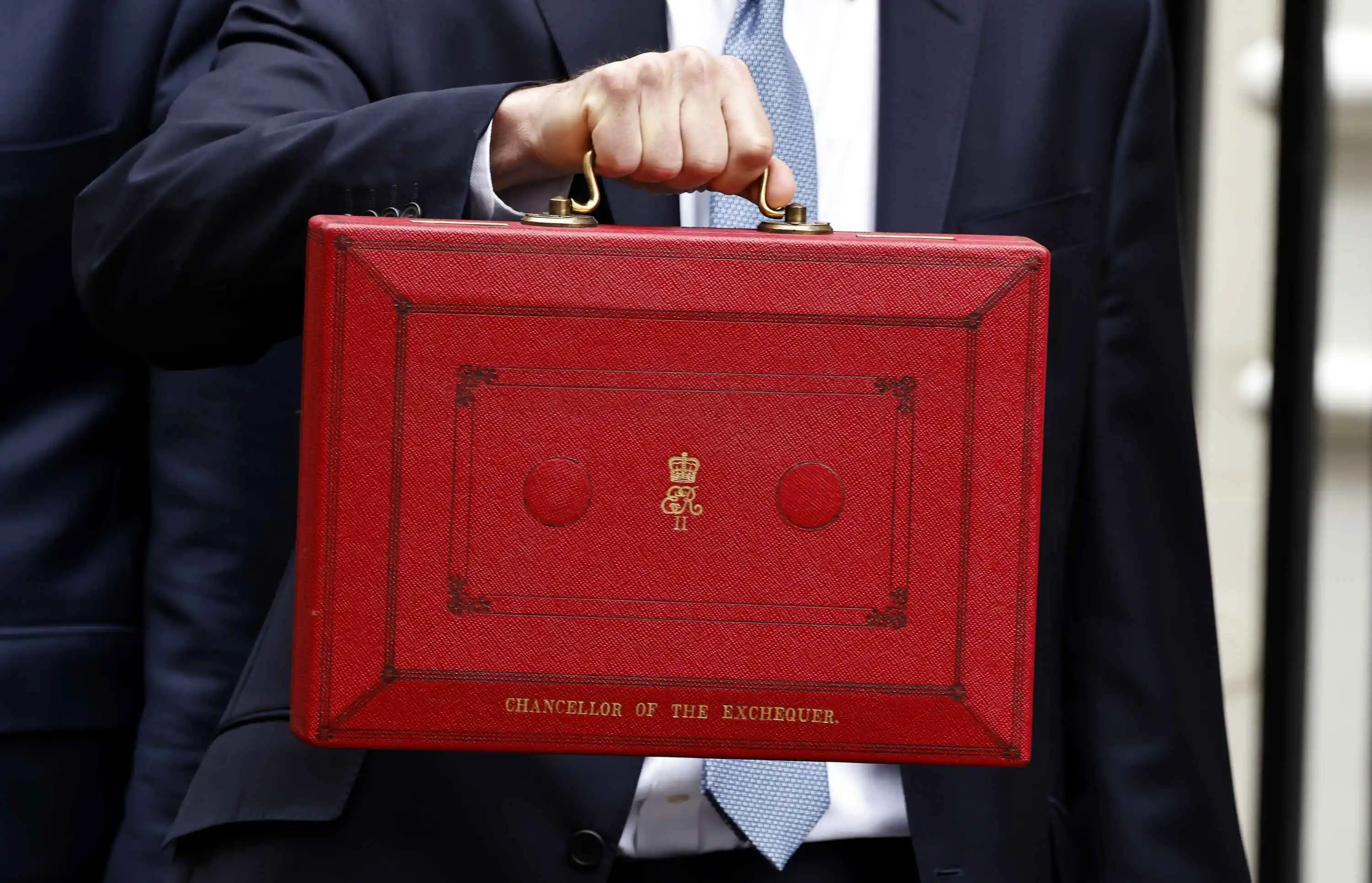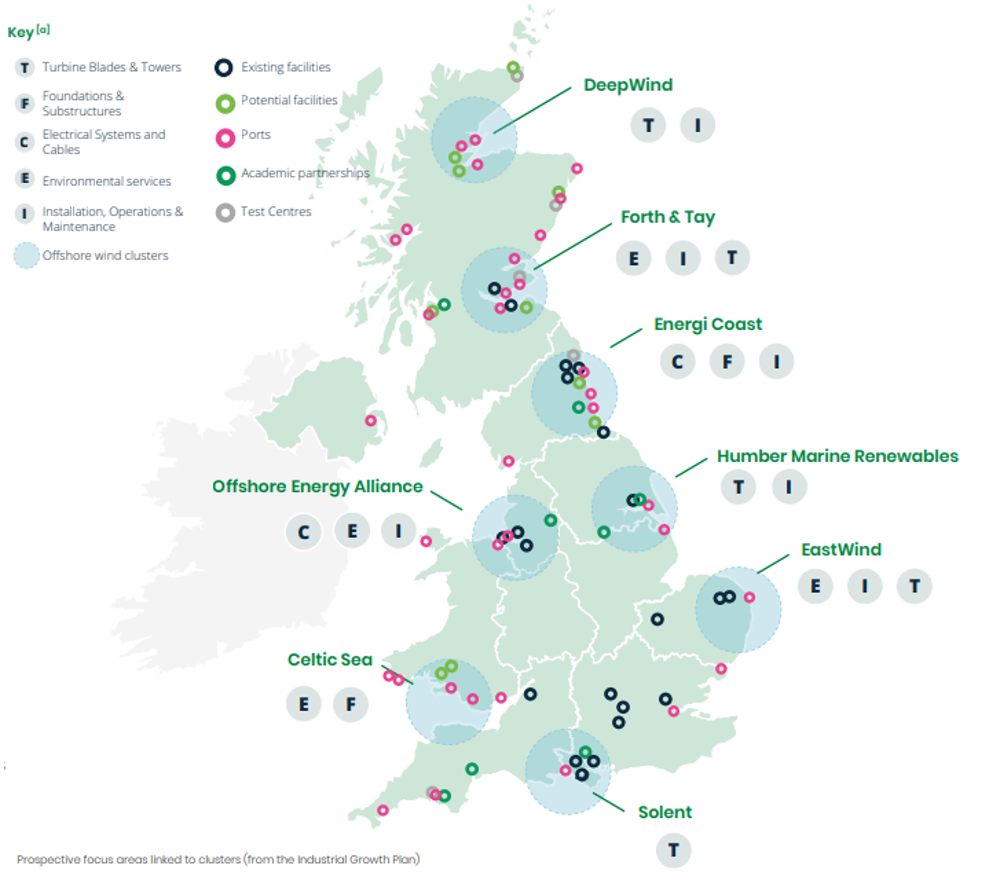Lucinda Tonge, Senior Public Affairs Advisor
28/10/2024 | 4 mins | Offshore wind



The case for a Windustrial Strategy
28 October 2024
Focusing on the wind industry as part of the Government’s Industrial Strategy can deliver a huge boost to economic growth, create tens of thousands of jobs and new investment opportunities whilst supporting the industrial strategies other sectors, such as transport, tech and manufacturing. The Government should use the upcoming Autumn Budget to start unlocking these opportunities.
Earlier this month, the UK Government published its much-awaited green paper ‘Invest 2035: the UK’s Modern Industrial Strategy’. This set out the Government’s vision for a 10-year plan to deliver the certainty and stability businesses need to invest in eight priority sectors which will drive its growth mission, one of which is clean energy.
The Government is now seeking feedback on which subsectors it should focus on within clean energy, to best achieve its objectives around net zero, regional growth, and economic security and resilience. Undoubtedly, there is a clear subsector within clean energy that the Government should pursue: the UK’s wind industry.
One of the UK’s success stories over the last two decades, the wind industry already employs over 30,000 people, and there is real potential to go further to drive economic growth and job creation across the country. This can be delivered not only through investing in the UK’s domestic wind industry supply chain, but also accelerating project deployment to provide clean, low cost and secure electricity to other industries and businesses, empowering them to fulfil their own industrial potential by helping to keep them competitive.
The wind industry’s £25bn industrial opportunity
A focus on the wind industry would support the wider objectives of the Industrial Strategy, namely net zero, regional growth, as well as economic security and resilience.
Most obvious is the industry’s contribution to the Government’s clean power mission and net zero goals. Last year 28% of the UK’s electricity came from wind power, and it is key to the electrification and decarbonisation of other industries.
But there is also a real economic growth opportunity to be seized through the industry’s supply chain which would help achieve the Green Paper’s other two objectives. For example, in offshore wind alone our Industrial Growth Plan (IGP) sets out steps to:
- Add £25bn in GVA in the UK over the next 10 years
- Create 10,000 well-paid, high-quality jobs (in addition to the baseline of 100,000 jobs by 2030)
- Distribute opportunities across the regions, from Northern Scotland down to South-West England and the Celtic Sea, particularly in coastal areas, thereby leveraging the UK’s regional capability.
‘Here’s one I prepared earlier’
In good news, the wind industry has already developed its own industrial strategy, with RenewableUK publishing the Offshore Wind Industrial Growth Plan (IGP) earlier this year.
The IGP acts to align Government and industry funding and initiatives, and was developed in collaboration with the Offshore Wind Industry Council (OWIC), The Crown Estate and The Crown Estate Scotland.
The IGP provides a clear, comprehensive framework to guide investment, both public and private, into five key areas where the UK can expect to secure new investment this Parliament and beyond. Investing in these areas would allow the UK to best compete internationally, providing energy security, economic growth and significant export opportunities.
The Government now has the chance to build on this comprehensive plan through its Industrial Strategy.

Onshore’s back in business
Furthermore, with the Government recently lifting the ban onshore wind, there is an opportunity to leverage the industrial opportunities from this additional project development into a wider ‘wind strategy’.
A holistic wind strategy could see shared innovation and supply chain development between the onshore and offshore sectors, whilst integrating the UK Government’s policies with devolved Government initiatives, such as the Scottish Wind Sector Deal.
A wind industry industrial strategy would also support other industrial strategies
Investing in wind as part of the Industrial Strategy is beneficial for other sectors too. The Government’s Green Paper has listed energy and infrastructure as key to growth-driving sectors and pro-businesses environments, stating that ‘access to cheap and reliable energy is an influential determinant of business competitiveness and an important consideration for internationally mobile investment’.
Renewable energy is the lowest cost form of new electricity generation for businesses and consumers, and offers greater energy independence and security by virtue of being less exposed than gas to volatile international price changes. Supporting the wind industry through an industrial strategy will support the acceleration of the clean energy transition, thereby benefiting other sectors and businesses with their own industrial strategies and electrification.
How do we make it happen?
There are three key steps for Government to unlock the wind industry’s industrial opportunity, starting with the Autumn Budget:
- Identifying the wind industry as a subsector of clean energy through the Government’s Industrial Strategy consultation.
- Committing to a multi-year co-funding programme with industry, aligned to the IGP, by confirming that the necessary £390 million of capital investment funding will be taken forward at the Autumn Budget to expand UK-based supply chains for the offshore wind industry and electricity networks.
- Announcing policies at the Autumn Budget to overcome barriers to early investment in ports. Increasing port capabilities and capacities as soon as possible is essential to unlocking the supply chain and associated industrial growth opportunities, as well as achieving the Government’s offshore wind targets. The Government should support ports through mechanisms such grants, revenue support and investment models, in addition to ensuring the National Wealth Fund, The Crown Estate, relevant Government departments and devolved administrations are aligned with industry goals to accelerate and maximise impact.



